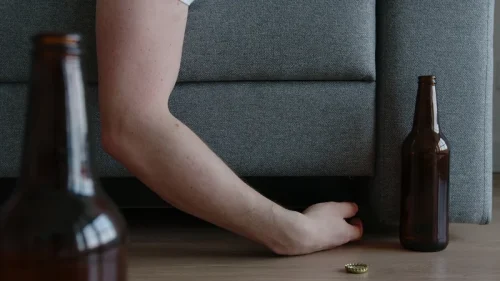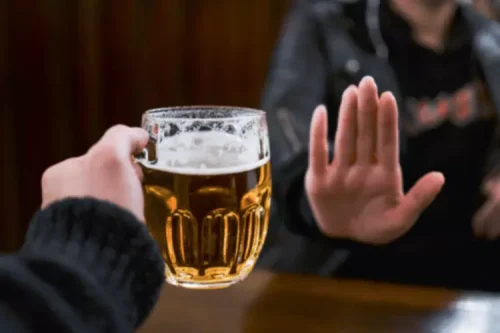
Because of the severity and complications that can arise from AWS, it is important to be familiar with proper treatment. The use of benzodiazepines is beneficial in lessening agitation, preventing withdrawal seizures, and reducing the progression of withdrawal symptoms. Pharmacists should be well educated on AUDs and their treatment and on the treatment of AWS to facilitate and optimize timely and appropriate patient care, which could ultimately lead to saving a patient’s life.
Hospital Readmissions Among Infants With Neonatal Opioid Withdrawal Syndrome
Despite its primary indication as anticonvulsivant drug, phenytoin has been shown to be ineffective in the secondary prevention of alcohol withdrawal seizures in placebo-controlled trials [66]. AWS is a cause of severe discomfort to patients, symptoms are disabling and patients who experienced withdrawal, often are afraid to stop drinking for fear of developing withdrawal symptoms again. The main goal of the treatment is to minimize the severity of symptoms in order to prevent the more severe manifestations such as seizure, delirium and death and to improve the patient’s quality of life [6, 44].
6 Other Drugs
For the adjusted analyses, based on clinical expertise and a review of the literature,8-10,15 we chose a priori to control for sex, low birth weight, gestational age, singleton vs multiple gestation, type of insurance, and year of the birth hospitalization. Unless otherwise noted, we report the weighted estimates and adjusted results. Design, Setting, and Participants This retrospective cohort study analyzed serial cross-sectional samples of US hospital discharge records from the Nationwide Readmissions Database for calendar years 2016 to 2020.
- Clinical institutes withdrawal assessment-alcohol revised is useful with pitfalls in patients with medical comorbidities.
- In opioid or benzodiazepine addiction, chronic stimulation of specific receptors for these drugs suppresses endogenous production of neurotransmitters, endorphins or GABA.
- No differences between the groups were observed for side effects and numbers of drop-outs between treatments [89].
- Thus, mothers are both separated from their newborns and discouraged from breastfeeding, each of which may present barriers to developing a relationship with their newborn.
Quality Care

These classes of medications have been tested and are currently used as adjunctive treatment for AWS. However, the lack of efficacy in preventing severe AWS and the risk of masking AWS symptoms make these drugs not recommended as monotherapy. They should be used only as adjunctive treatment, in patients with co-existing comorbidities, and to control neuro-autonomic manifestations of AWS when not adequately controlled by BZDs administration.
Alternative medicine
- In the inpatient setting, nurses perform frequent assessments that inform the treatment plan.
- A summary of relevant markers in the emergency setting is given in Table Table3.3.
Intravenous or intramuscular lorazepam may be used in patients with hepatic disease, pulmonary disease or in the elderly where there is risk of over-sedation and respiratory depression with diazepam. Once a clinical diagnosis of alcohol withdrawal is made, we must review the patient’s condition from time to time for the appearance of signs of medical is sneezing a sign of withdrawal or neurological illness which may not have been evident at admission but may develop subsequently. Alcohol withdrawal is a potentially serious complication of alcohol use disorder. It’s important to get medical help even if you have mild symptoms of withdrawal, as it’s difficult to predict in the beginning how much worse the symptoms could get.

While some of the symptoms of alcohol withdrawal syndrome are similar to a hangover, they are not the same condition. People with alcohol withdrawal syndrome can have a wide variety of symptoms, depending on how much alcohol they drank, their body type, sex, age, and any underlying medical conditions. Intended to aid clinicians in their clinical decision making and management of patients experiencing alcohol withdrawal syndrome. We tabulated the major recommendations from each source as regards the management of alcohol withdrawal with respect to severity of withdrawal, doses and regimen used in each study and the outcomes.
Alcohol Withdrawal
- The production of these neurotransmitters is affected when a person stops or significantly reduces alcohol intake.
- Ethanol is the primary alcohol that’s ingested by people with alcohol use disorder.
- The administration of these drugs as monotherapy could mask AWS symptoms and reduce CIWA-Ar scores with a consequent reduction of the prescription of BZDs and possible risk to develop complicated AWS.
- If you drink only once in a while, it’s unlikely that you’ll have withdrawal symptoms when you stop.
MODERATE SYMPTOMS (CIWA-AR SCORE OF 10 TO 18 OR SAWS SCORE GREATER THAN

Supporting Long-Term Abstinence
- Benzodiazepines carry a Food and Drug Administration boxed warning because there is a risk of dependence.
- Despite its primary indication as anticonvulsivant drug, phenytoin has been shown to be ineffective in the secondary prevention of alcohol withdrawal seizures in placebo-controlled trials [66].
- AWS is often accompanied by intense cravings to drink and may affect your emotional, cognitive, and physical well-being.
- Withdrawalmanagement should not be conceptualized as a discreteclinical service, but rather as a component of the processof initiating and engaging patients in treatment for alcoholuse disorder.
Leave a Reply